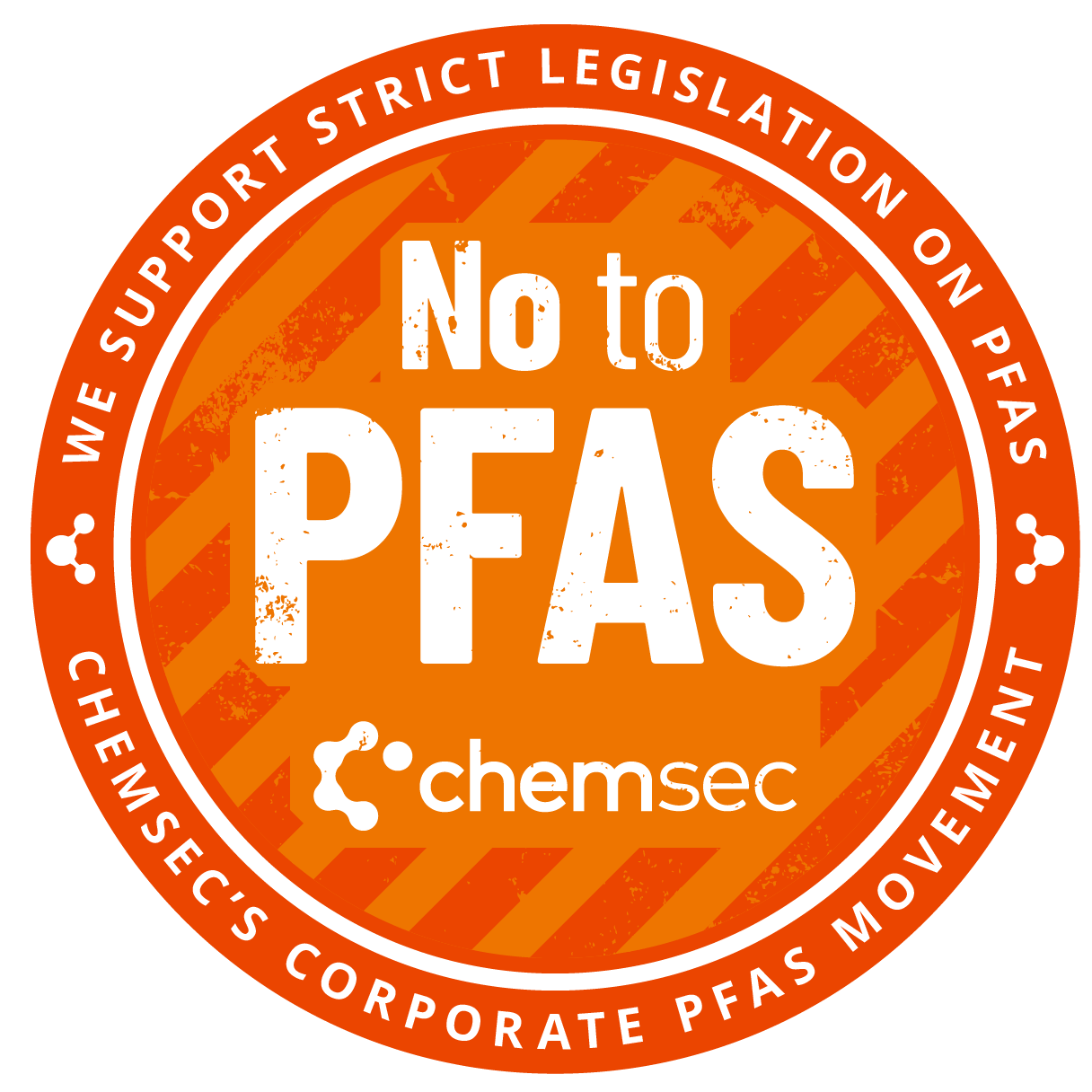
About PFAS
PFAS are known as forever chemicals. And there’s a reason for that. PFAS is the abbreviation of per- and polyfluoroalkyl substances, which are sometimes called fluorocarbons or abbreviated as PFCs (per- and polyfluorinated compounds). They pose one of today’s greatest environmental challenges because they degrade extremely slowly if at all, and many of them are believed to be hormone disruptive and carcinogenic. PFAS are currently used in a number of applications such as non-stick frying pans, electronics, fire retardant foam and water repellents for textiles. Read more below about these chemical substances and how they can be substituted in the best possible way.
All-round applications
PFAS make up a large, versatile group of chemicals that offer a variety of properties for a wide range of applications. These substances are characterized by their unique surface properties in combination with a high degree of chemical stability. As a result, they are often used in applications where a surface treatment is required long-term or in applications associated with extreme conditions, (e.g., hazardous chemicals, high temperatures). This is why PFAS are used in firefighting foams, protective coatings in automotive or electronics, water resistant makeup, non-stick cookware, and in water and stain repellent coatings for construction materials, packaging, and textiles used in upholstery, rainwear, and other outdoor fabrics.
Forever chemicals
These unique properties of PFAS are primarily attributable to the carbon-fluorine bond, a chemical bond that is manufactured synthetically, not found in nature, and extremely hard to break. The resilience of this bond explains the persistence of chemicals in nature containing this unnatural chemistry.
Life-forms simply lack the ability to degrade these chemical structures, which together with their affinity for surfaces makes most PFAS highly bioaccumulative in living organisms. Earning them their infamous nickname: “Forever Chemicals.” And by now they could even be called “Everywhere Chemicals”, as some PFAS are found in rain in some of the most remote locations on the planet*.
Problematic for life
Due to their bioaccumulative properties, PFAS can be found in all living organisms, including you. And this represents a health risk. Exact mechanisms are complex and not fully understood, but extensive evidence from epidemiological studies suggest that exposure to PFAS can have adverse health effects, including kidney and liver disease, hormonal disruption, fertility and foetal damage, altered immune function and even cancer**.
These properties have prompted legislators to restrict the use of two of the most widely used PFAS: PFOA (Perfluorooctanoic acid) and PFOS (Perfluorooctanesulfonic acid). In addition to meaningless environmental claims (PFOS/PFOA-free) on consumer packaging, this has also led to rampant growth in the use of other PFAS with unfortunately similar disastrous effects on life.

Non-regrettable substitutions
Every phase-out requires substitutions. And it may by now be obvious that substituting PFAS should not be done with PFAS, as has been done before. Thankfully, the EU is currently in the legislative process of setting up a broad restriction on the use of PFAS***, reducing this probability further. Substitutions are clearly diverse for the different application areas and PFAS types but should always be approached critically.
In water repellent finishes for textiles, PFAS-free alternatives have given rise to use of plastic-like polymers, which show poor biodegradability in the natural environment, as well as incorporation of substances called isocyanates, which create structures that reduce the recycling possibilities of textile fibers. These substitutions are unfavorable if aiming for circularity and could be considered regrettable substitutions in the future****.
Ideally, substitutions are utilizing chemistry like that used by nature, as well as being biodegradable within nature. This is the vision we have at OrganoClick® when making our products green inside. For an environment free from plastic waste and chemical pollution.
*Cousins, Ian T., et al. “Outside the safe operating space of a new planetary boundary for per-and polyfluoroalkyl substances (PFAS).” Environmental Science & Technology 56.16 (2022): 11172-11179.
**Fenton, Suzanne E., et al. “Per‐and polyfluoroalkyl substance toxicity and human health review: Current state of knowledge and strategies for informing future research.” Environmental toxicology and chemistry 40.3 (2021): 606-630.
OrganoClick can proudly say that none of our products have ever contained PFAS. We have also joined the PFAS Movement — an important driver in achieving the worldwide phase out of PFAS.


